I can remember my younger self contemplating the existence of the so-called red string of fate. The general idea is that there was someone interconnected to you that was decided by birth. Aside from basic survival (hard enough as it is), it was an additional task where you would be rewarded with the greatest romantic partner whom was 100% compatible with you. You weren’t alone on this quest; the other person would also be tasked with looking for you. As I’ve gotten older, I’ve come to see this “thread of fate” to be more of a fantasy trope that’s better suited for romantic novels tugging a little bit at your heartstrings.

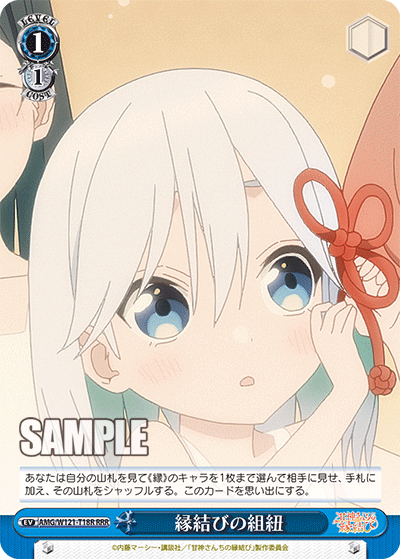
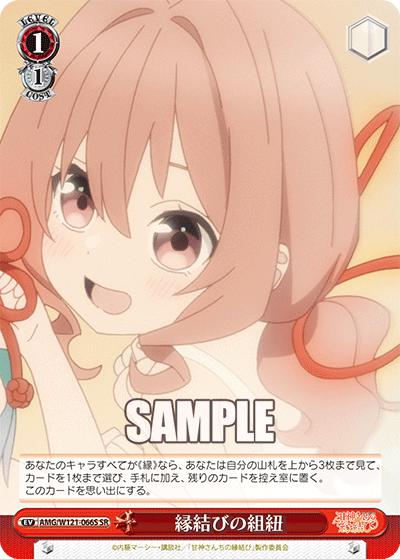
AMG/W121-T18R-RRR 縁結びの組紐 (center)
AMG/W121-066S-SR 縁結びの組紐 (right)
While writing this post, I only noticed that the three “Matchmaking Braids” events are interconnected art-wise. This event is the main mechanic of the series where each of the main girls: Yae, Asahi, and Yuna will be gaining a number of abilities based upon having these events in memory.
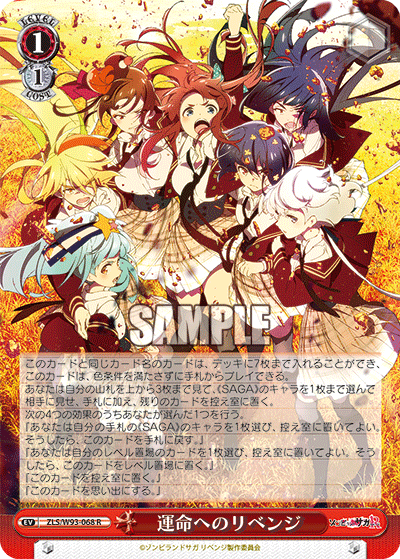
At first glance, the first thing I thought of was the old Zombieland Saga event which that series is infamous for relying upon. Now, in the case of Amagami, the requirements aren’t as heavy handed as that of Zombieland Saga. While many of the cooler effects don’t realistically work without the event in one location or another for Zombieland Saga, many of the Amagami cards function quite fine without it outside of a few exceptions.
Yes, arguably, the top end of Amagami does require a number of the events in memory, but the fact that the early-to-mid game is less dependent on the mechanic does give it a bit more feasibility.
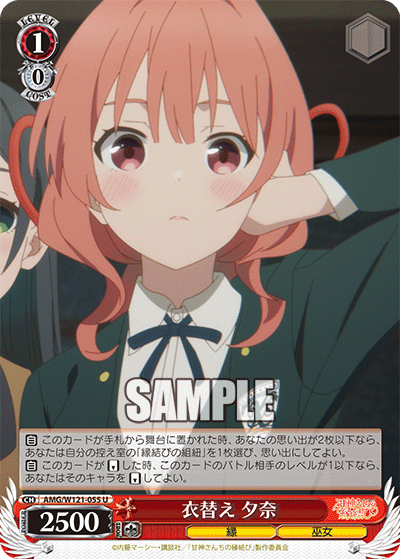


AMG/W121-077R 結ばれし縁 朝姫 (center)
AMG/W121-034C 意思表明 夜重 (right)
Each of the sisters has their own ways of getting the specified event into memory to enable their respective decks. As such, you aren’t reliant on running some global universal card to make sure to enable each of the girls’ top ends. These cards shown above are some that directly put the “Matchmaking Braids” event into memory, but that’s not to say that there aren’t other ways to do so. Also, as a side note, each of the girls are placed into their own respective colours, encouraging you to play around with each of the girls’ unique decks.
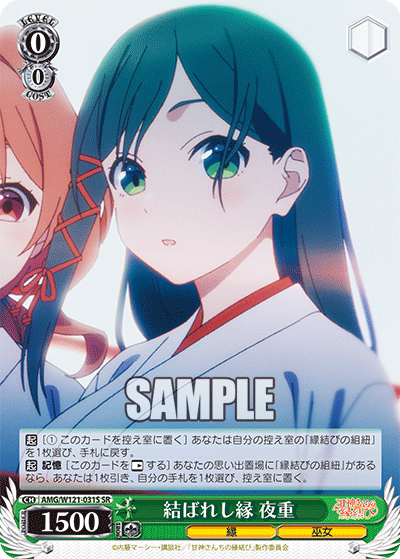
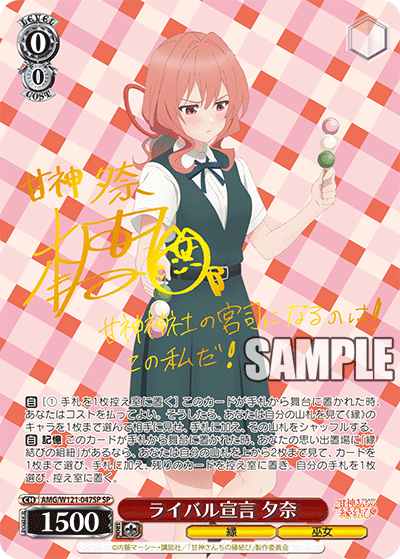

AMG/W121-031S-SR 結ばれし縁 夜重 (left)
AMG/W121-047SP-SP ライバル宣言 夕奈 (center)
AMG/W121-076R 甘えんぼな三女 朝姫 (right)
Compared to some older series who also relied upon the memory mechanic, many of Amagami’s cards provide additional assistive effects that improve upon the base cards rather than just supply power. The key here is that even without the memory mechanic, many of these Amagami cards are still fairly good in their own right. When you fulfill their requirements of having the event in memory, they drastically improve on top of their original effects. Asahi is a bit of an oddball here as most of her memory cards mainly supply power or are heavily reliant on the mechanic.
Rather than considering the 1/1 events as hindrances to your deck building as a crutch, these events and their supportive pay-offs are well worth it. Compared to traditional events that may need to be used, by allowing there to be both bonders and cards that directly put them into memory, fulfilling the mechanic no longer needs to be a game of complicated goldfish. Also, by letting the cards that have synergy with these events be decent on their own and provide valuable utility effects and so on, I think the teams in charge have done a stellar job at intermixing both flavour and mechanics together.